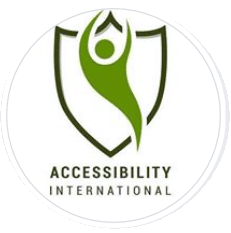The ADA Applies to Domino’s Website and App
The Ninth Circuit earlier this year in Robles v. Domino’s Pizza, LLC, became the first circuit to expressly extend Title III of the Americams with Disabilities Act (ADA) to mobile applications.
Among other things, Robles alleged in his complaint that, in addition to the website, he tried multiple times to order customized pizzas on the company’s mobile app, but that he “was unable to place his order due to accessibility barriers of unlabeled buttons that do not conform to Apples’s IOS accessibility guidelines.”
In reversing the trial court, the appellate court held that the ADA applies to Domino’s website and app, which connect customers to the goods and services of Domino’s physical restaurants.
ADA Lawsuits Focused on Mobile Apps Accessibility are Coming
Perhaps because of the Ninth Circuit’s ruling, businesses had been seeing an uptick in the number of pre-suit demands targeting the accessibility of apps. On October 7,2019, the Supreme Court denied Domino’s petition for certiorari, leaving in place the Ninth Curcuit’s ruling. Consequently, we anticipate ADA lawsuits focused on the inaccessibility of mobile apps will continue to proliferate.
‘There’s an app for that’ is Now Part of Our Vernacular
The Supreme Court in another case recently observed that apps allow users to “send messages, take photos, watch videos, buy clothes, order food, arrange transportation, purchase concert tickets, donate to charities, and the list goes on. ‘There’s an app for that’ has become part of the 21st-century American lexicon.”
Thus far, however, most lawsuits in the crowded field of digital accessibility have focused primarily on the inaccessibility of websites. As a result, businesses may have overlooked th fact that their apps are equally at risk for such claims. Now is the time for companies to review their mobile apps’ compliance with the ADA and develop a remediation plan that will limit exposure to these lawsuits.
Why Your Mobile Apps Must Comply with WCAG 2.0 to Avoid Lawsuits
The accessibility of mobile apps is not a new issue. However, legal and industry guidance regarding the accessibility of mobile apps has been even less defined than the accessibility of websites. In 2014, the Department of Justice in its consent decrees began requiring that the mobile apps of companies comply with the Web Content Accessibility Guidelines (WCAG) 2.0 AA.
But because WCAG was developed for the web, it was not always clear how to apply such guidelines to mobile apps. Additionally, technologies have changed since WCAG 2.0 was released in December of 2008, which meant there were gaps in the coverage of the guidelines. To determine how each WCAG 2.0 requirement (Success Criterion) could be met in different contexts of use, such as with mobile apps requires some interpretation to say the least.
Now W3C, WAI and WCAG 2.0 all Apply to Mobile App Accessibility
In an effort to provide much-needed guidance, the World Wide Web Consortium (W3C)’s Web Accessibility Initiative (WAI) formed a task force to determine the application of WCAG 2.0 to non-web contexts.
In September of 2013, the W3C-WAI published the note, “Guidance on Applying WCAG 2.0 to Non-Web Information and Communications Technologies (WCAG2ICT),” in which the task force found that the majority of Success Criterion from WCAG 2.0 could apply to non-web software with no or only minimal changes.
Additionally in February 2015, W3C released it’s first working draft, “Mobile Accessibility: How WCAG 2.0 and Other W3C/WAI Guidelines Apply to Mobile,” which similarly observed that “most of the advice” in the document also applies to mobile apps..
The general takeaway, from these publications is that WCAG 2.0 is “highly relevant to both web and non-web mobile content and applications.” therefore, the work that businesses already have done to remediate their websites can be applied to their apps.
This is particularly true in the case of a web-based app, which is web content operated through the mobile device’s browser. Because native apps are software-based, companies must consider accessibility early in the development phase and be mindful of designing to interface with the building-in accessibility features of each platform, the most popular of which are IOS and Android.




